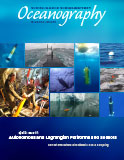First Paragraph
Autonomous ocean gliders have become an integral component of ocean observation systems, and their use is increasing globally (Liblik et al., 2016; Rudnick, 2016). Gliders are typically deployed over periods of weeks to months, operate under a wide range of weather conditions, and provide high spatial and temporal resolution measurements (Glenn et al., 2016). Ocean glider deployments in Australia commenced in 2007 with the establishment of the Australian National Facility for Ocean Gliders (ANFOG) as part of the Integrated Marine Observing System (IMOS). This paper summarizes the development of a single facility covering all aspects of glider operations in Australia and a decade of operation.

